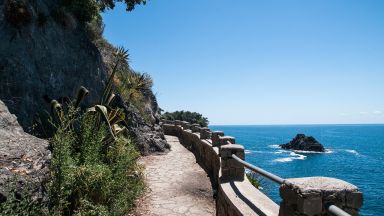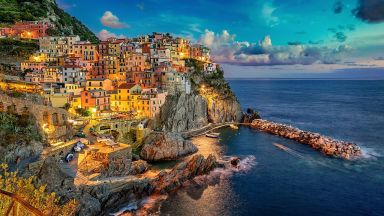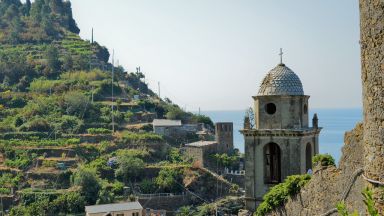Vernazza: The Complete Guide
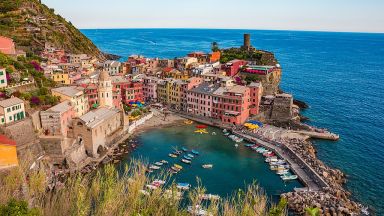
Vernazza, known as Vernassa in Ligurian and Vernasa in the local dialect, and derived from the Latin name Vulnetia, is a town and comune situated in the province of La Spezia, in the Liguria region of northwestern Italy. It is one of the five towns that collectively form the renowned Cinque Terre region. As the fourth town when traveling north, Vernazza stands out as a true “fishing village” on the Italian Riviera, maintaining its authentic charm. It holds the distinction of being the only natural port within the Cinque Terre and is famous for its elegant houses.
The name Vernazza originates from the Latin adjective “verna,” meaning “native.” The village’s name is further associated with the indigenous wine called Vernaccia, which played a role in its naming.
History of Vernazza
The earliest documented records acknowledging Vernazza as a fortified town date back to 1080. It served as an active maritime base for the Obertenghi, an Italian noble family, and was a significant departure point for naval forces defending against pirates. Over the following centuries, Vernazza played a crucial role in Genova’s conquest of Liguria, providing a port, fleet, and soldiers. In 1209, approximately 90 influential families from Vernazza pledged their loyalty to the Republic of Genova. The presence of a church was first recorded in 1251, with the mention of the parish of San Pietro in 1267. The Church of Santa Margherita d’Antiochia of Vernazza was referenced in 1318. Some scholars believe that the construction of the church actually took place earlier, possibly in the 12th century, based on materials and construction techniques. The Church of Santa Margherita d’Antiochia underwent expansions and renovations during the 16th and 17th centuries, culminating in the construction of the octagonal bell tower that rises from the apse.
In the 15th century, Vernazza fortified itself to defend against frequent and devastating pirate raids, erecting defensive walls. During the mid-17th century, like other villages in the Cinque Terre, Vernazza faced a period of decline that impacted wine production and delayed the development of the trail system and harbor mole, designed to protect against rough seas.
In the 19th century, after a prolonged period of stagnation, Vernazza experienced a revival in wine production, expanding and creating new terraced hillsides. This led to a resurgence in Vernazza’s commerce. Additionally, the construction of the Genoa–La Spezia rail line, initiated during this time, put an end to Vernazza’s isolation, resulting in a 60% increase in the population. The establishment of La Spezia’s naval base also provided employment opportunities for many Vernazza residents.
As the 20th century arrived, Vernazza faced a wave of emigration as agricultural work became perceived as dangerous and a cause of illness, while the ability to further exploit agriculture diminished.
In 1997, the Cinque Terre was recognized as a UNESCO World Heritage Site, followed by the establishment of the National Park of the Cinque Terre in 1999. Today, tourism serves as the primary source of revenue for Vernazza. Nevertheless, fishing, wine production, and olive oil production continue as a testament to the enduring traditions of the region.
On October 25, 2011, Vernazza suffered severe damage from torrential rains, massive flooding, and mudslides that affected not only the Cinque Terre but also Val di Vara, Val di Magra, and the province of Lunigiana in Liguria. The town was submerged under more than 4 meters of mud and debris, including the train station. The event resulted in over 100 million euros worth of damage, prompting the evacuation of the town and the declaration of a state of emergency that lasted for several months.
Visiting Vernazza for the first time and wondering what are the top places to see in the city? In this complete guide, I share the best things to do in Vernazza on the first visit. To help you plan your trip, I have also included an interactive map and practical tips for visiting!
This website uses affiliate links which earn a small commission at no additional cost to you.
3 Best places to See in Vernazza
This complete guide to Vernazza not only tells you about the very best sights and tourist attractions for first-time visitors to the city but also provide insights into a few of our personal favorite things to do.
This is a practical guide to visiting the best places to see in Vernazza and is filled with tips and info that should answer all your questions!
Belforte Tower & Castle Doria
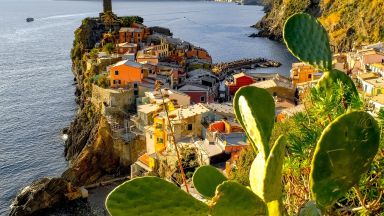
| Price: € 1.50 | Distance: 0.20km
Visiting Belforte Tower & Castle Doria
Sanctuary of Nostra Signora di Reggio, Cinque Terre
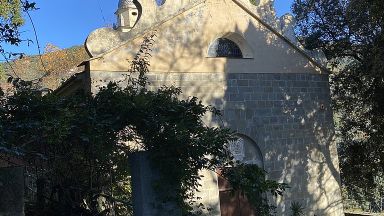
Visiting Sanctuary of Nostra Signora di Reggio, Cinque Terre
Santuario di Nostra Signora delle Grazie, Cinque Terre
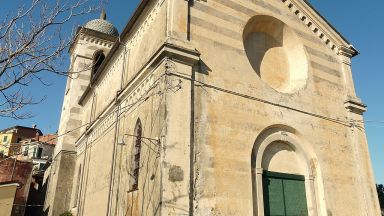
Visiting Santuario di Nostra Signora delle Grazie, Cinque Terre
Best Time to Visit Vernazza
Throughout the year, Vernazza and Cinque Terre offer a range of unique experiences, making it a destination suitable for year-round visits. Here’s a breakdown of the best times to plan your visit:
Spring (March to May): During spring, the area enjoys mild and pleasant temperatures, with nature coming to life as flowers bloom. Hiking trails become accessible, and the sea offers a calm environment for swimming. This season allows you to explore the charming villages before the summer crowds descend.
Summer (June to August): The summer months bring extended sunny days, providing the perfect backdrop for swimming and beach relaxation. However, this is also the peak tourist season, characterized by substantial crowds, particularly in July and August. To escape the heat and the masses, consider scheduling your visits for early mornings or late afternoons.
Autumn (September to November): Autumn is a splendid time to discover Vernazza . It offers mild temperatures, reduced rainfall, and a vibrant local vineyard scene with full harvests. This is an opportunity to savour new wines and take part in local festivals. Hiking trails of Cinque Terre remain open, although daylight hours gradually decrease.
Winter (December to February): The winter season is the most tranquil period in Vernazza. The villages exude a peaceful ambiance, and accommodation prices are at their lowest. However, temperatures can be quite chilly. This season is ideal for those seeking a serene experience, even though some hiking trails may be closed for maintenance.
Vernazza caters to various preferences and activities throughout the year, whether you’re looking for warm beach days, serene hiking adventures, or cultural festivals.
Average Temperatures in Vernazza
- January 12°C 54°F 17
- February 13°C 55°F 19
- March 15°C 59°F 15
- April 18°C 64°F 12
- May 21°C 70°F 12
- June 26°C 79°F 8
- July 30°C 86°F 4
- August 29°C 84°F 7
- September 25°C 77°F 13
- October 21°C 70°F 24
- November 16°C 61°F 28
- December 13°C 55°F 22
How to get to Vernazza
Flying to Vernazza: Similar to the other villages, the nearest airports are in Pisa, approximately 110 km away. From Pisa, you can opt to take the train or rent a car. Another option is the Genoa airport, which is at a similar distance. It takes about two hours by car, following the A10 Genoa-Ventimiglia, A7 Milan-Genoa, and A12 Genoa-Livorno, and then proceeding as indicated. If you prefer the train, you need to travel to Genova Brignole from the airport. For those arriving from further distances, Milan Malpensa is the most well-connected international airport, situated about 300 km away. The journey takes approximately 3 hours and 45 minutes. By train, there is a bus service available, or you can take the Malpensa Express train to the central station.
Getting to Vernazza by Train: The Vernazza train station is conveniently situated within the village, a short stroll from the sea and the Santa Margherita di Antiochia church. The ticket price from La Spezia or any other Cinque Terre village is 5 euros in 2023, with a reduced fare of 2.5 euros for children.
Driving to Vernazza: If your journey originates from the South, your designated motorway exit is LA SPEZIA. Upon entering the town, continue driving while following the Cinque Terre signs, guiding you to the picturesque coastal road, Litoranea (SS370). This route offers breath-taking views of the Cinque Terre from elevated vantage points. As you traverse above Riomaggiore and Manarola villages, proceed towards Volastra and then descend towards Vernazza.
If your journey originates from the North or Northwest of Italy, such as Milan or Genoa, take the A12 motorway (Genova Livorno) and exit at CARRODANO (you will be approximately 20 km from the village). However, this road is currently deemed hazardous and challenging. We strongly recommend against choosing this exit and instead continue driving to La Spezia, following the directions mentioned earlier. Please be attentive to road signs indicating potential closures due to landslides!
There are two car parking areas in Vernazza managed by the same company, Vernazza Car Parking, each with different rates: the upper car parking costs 15.00 euros per day, while the lower car parking costs 18.00 euros per day.
It’s important to note that there are no petrol (gas) stations within the Cinque Terre area. The nearest refuelling stations are located in La Spezia and Levanto.
